Behind Closed Doors in Aspley Guise - Nina Montgomery
Behind Closed Doors in Aspley Guise – take a walking tour of the special pathways of Aspley Guise and discover some secrets of the past…..

1. Guise House, 2. Aspley House, 3. Woodcote, 4. The Rookery
Walking around the village of Aspley Guise is a delightful historical treat, with 29 listed buildings, and a history stretching back as far as the Domesday book, when ‘Aspeleia’ was listed with 25 families. Over the centuries the village has remained a quiet gem hidden in the heart of Bedfordshire but lurking behind the impressive frontages, are many secrets to be told.
Today the main road cutting across the centre of Aspley Guise is a busy commuter cut through, the arrival of the M1 motorway and the development of J13 in the 1960’s forever changed the landscape of the village. But if you step off onto any of the side roads then the peace and tranquillity of this beautiful village can be found in the many special pathways. As I found more stories of the past, I also found a web of walkways though which these secrets of the village can unfold.
Starting from the car park at the Village Hall-Aspley Guise it’s a short walk to the main square in Aspley Guise. On 3rd Sept 1939, this is where the first WW2 evacuees to the village arrived, after coming by train from London to Aspley Guise Station. Lady Eleanor Allen was responsible for the billeting of these evacuees in the houses of Aspley Guise. A simple formula was applied to the process, if the house had 6 rooms (in total) and the number of people living in the house was 4, then the number of ‘available’ rooms in a house was 2, which equalled 2 evacuees. The larger houses of Aspley Guise billeted lots of evacuees!
As you approach the square the Moore Place Hotel (formerly The Holt – Aspley Guise) has an imposing position overlooking the square. An 18th century Manor house, The Holt was one of many houses requisitioned in Aspley Guise during WW2. It was used to house staff working at the Government Code and Cypher School based at Bletchley Park, as well as Prisoners of War (POW’s). From 1946, it was then used by the Bedfordshire War Agriculture Committee as a Women’s Land Army hostel to house up to 40 land girls who worked on local farms until December 1948. At Hayfield Farm in Aspley Guise the land girls worked alongside Italian and German POW’s.
The Anchor (new image) & Classical Academy (old image)
From the Square, go up Church Street, passing the Anchor Pub – Aspley Guise. Originally a cottage built in 17th Century, it was later converted into a beer house and then became the Anchor when sold to the Charles Wells brewery in 1881. It is currently being renovated but is still owned by Charles Wells today.
Continuing on Church Street you will see the iron gates of Guise House –  Aspley Guise on your right hand side. Built in the early 18th century, now Grade 2* listed, Guise House and its grounds were home to (Aspley) Classical Academy until 1845. Set up in 1715 by a local man Thomas Gressam it was a school at its peak it to rival Eton and Harrow. It housed around 100 pupils, masters and servants. Boys came from high levels in society and were sent to the Classical academy from all over the country. It was closed by Revd Richard Pain, headmaster as pupil numbers had dropped to 57 and it was unable to compete with new reformed public schools. Later the house was set up as a War Hospital Supply Depot for WW1 by Miss H.F.Foyster, the then owner of the house, to meet the growing need for medical supplies for the wounded at home and abroad. It would have consisted of departments for supplies, such as bandages and swabs, papier mache splints, slippers and shoes, carpentry, crutches and jackets to treat pneumonia and artificial limbs. It was one of many depots set up across the country by private individuals, in which local tradesmen would train people in craft work and where many volunteers, including school children would make items at the Depot or pick up raw materials to make them at home.
Aspley Guise on your right hand side. Built in the early 18th century, now Grade 2* listed, Guise House and its grounds were home to (Aspley) Classical Academy until 1845. Set up in 1715 by a local man Thomas Gressam it was a school at its peak it to rival Eton and Harrow. It housed around 100 pupils, masters and servants. Boys came from high levels in society and were sent to the Classical academy from all over the country. It was closed by Revd Richard Pain, headmaster as pupil numbers had dropped to 57 and it was unable to compete with new reformed public schools. Later the house was set up as a War Hospital Supply Depot for WW1 by Miss H.F.Foyster, the then owner of the house, to meet the growing need for medical supplies for the wounded at home and abroad. It would have consisted of departments for supplies, such as bandages and swabs, papier mache splints, slippers and shoes, carpentry, crutches and jackets to treat pneumonia and artificial limbs. It was one of many depots set up across the country by private individuals, in which local tradesmen would train people in craft work and where many volunteers, including school children would make items at the Depot or pick up raw materials to make them at home.
Continuing up the hill is the impressive mid 18th century garden walls of Aspley House – Aspley Guise (Grade 2* listed) with arches offering views across long manicure lawns of Aspley House. A small country house built c.1690 for William Norcliffe. The house was sold by auction in March 1939 and for a while during WW2 it was used as a school until reverting to use as a private home by 1951. Today the house is owned by Lord Wolfson, the current chief Executive of Next plc, on 18th June 2010, Wolfson was created Baron Wolfson of Aspley Guise. The house has had a history of ‘socially eminent’ owners. In 1784 the Chernocke Smiths of Hulcot bought the house. They were large landowners and related to many great country families. They acquired more land in Aspley Guise when the owner of the nearby the Old House, Aspley Guise (below) had to sell it and the Rev.Boteler Cernocke Smith moved into the Old House in the mid 19th Century. The family left some legacies from their time in the village. They were responsible for the erection of the first gas lamp in the Square and when they lost two sons in the First World War they erected The Memorial on Bedford Road.
Aspley House
Immediately past the walls of Aspley House, if you fancy a short detour, you can take an old footpath running alongside the front of Aspley House, this affords a secret view of the house (as below) and if you follow the path to the end you will reach Bedford Road. Turning right you can take a look at The Memorial – Aspley Guise, a quiet sanctuary on the otherwise busy road, dedicated to the 40 young men of Aspley Guise who died in WW1 & WW2.
1. Public footpath to the Memorial 2. The Old House 3. The Memorial 4. The Avenue
Back beside the walls of Aspley House, the main road continues up to the church, but round to the right of the old wall is a spur known as ‘The Avenue’ which leads to The Old House – Aspley Guise, thought to be the oldest dwelling in Aspley Guise c.1545, its Grade 2 * listed and its original Tudor features are still visible. It was however ‘modernised’ in the 18th century, when many new additions were incorporated into the old house; a wine vault, warehouse, counting house, a coach house, dove house, wash house and even a canal was added, which was dug from the Spring in The Square through the gardens to feed the ponds. With a new façade of white stucco it also became known as the White House. At this time, the house was lived in by the How family, who were Quakers. Richard How was Squire for Aspley Guise and had a role in the setting up of the Classical Academy at Guise House. Parish records show that over the years, the How family had a surprisingly stormy relationship in the parish. In 1735, the churchwardens accused Thomas How of not paying rates, he then in turn accused them of fraud and mismanagement of the accounts. The case went to Bedford Court and How won. There was also an on-going feud with Francis Moore (who built Moore Place c.1786). He acquired land after the How’s were forced to sell it to pay off creditors and the How family who had been the largest landowners for generations resented the newcomer and accused him of leading the village against them. Ironically Moore had come to the village to attend the Classical Academy and married the headmaster’s daughter thus establishing himself in the village.
Out on Church Road again follow the road up the hill you will see the imposing façade of St Botolphs Church – Aspley Guise, set on high ground commanding prominent views. Parts of the church date back to the 15th Century but much was rebuilt or restored in the 1800s. There is an extensive collection of stained glass in the church, much of it Victorian in origin.
The Rookery
Following the road slightly down the hill you will see The Rookery – Aspley Guise (RAG). During WW2 this was home to Sefton Delmer and his wife, and it was the Aspley Guise headquarters for members of the Political Warfare Executive (German department) where black clandestine warfare propaganda was devised. Delmer, who escaped from Germany, prior to the war, had originally been living in another requisitioned house, Larchfield – Aspley Guise but as the PWE operation grew, larger premises were needed to house the teams involved. In Jul 1942, recording equipment was also installed at RAG, and huts were built in the garden to house the ever expanding operation. Here, secret broadcasting Research units (RU’s) of the Political Warfare Executive (PWE) created black propaganda programmes to broadcast to Germany and other occupied countries, plus news transmissions intended for Polish agents in Poland and Germany. Not everyone involved agreed with Sefton Delmer’s approach to ‘black’ propaganda, especially the likes of his GS1 black radio station which used vulgar language and pornography, however it was successful in generating a large audience and made nearly 700 broadcasts during its operation. By 22nd March 1943, Delmer’s RU G9 was his most ambitious clandestine radio station, and broadcasting live it made extensive use of dance music interleaved with news flashes and sport news. As more information about this Secret War is unveiled from previously closed files in the National Archives, a more recent claim is that Rudolf Hess was brought from Scotland (after his attempt to fly to England solo and negotiate peace) to ‘a house in Aspley Guise’ for interrogation. This is still the source of debate, but what cannot be disputed, is the amount of intelligence gained, sifted and re-worked at RAG for later broadcast, under the direction of Delmer. So accurate is the intelligence believed to be that the Gestapo began to investigate individual broadcasts. Not all areas of government supported Delmer with intelligence, but Lieutenant Commander Donald McLachlan, head of Naval Propaganda sub-section NID 17Z was an enthusiastic supporter and established a base in Woodcote, Aspley Guise and along with Naval personal assistant, Lieutenant Ian Fleming (the future creator of James Bond), they were responsible for vital sections of naval intelligence used by the PWE
St Botolphs & the Pathway to the Mount
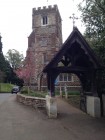 Re-trace your steps back to the church and immediately opposite you will see a pathway alongside the graveyard. Follow the path up past the graveyard, turn right and go through a stile, continue following an old footpath. This takes you past the Golf Course, Aspley Guise, established with a grand opening on 7th May 1914. On the opening day a special train was made available from London and more than 450 spectators were present to watch the opening exhibition match. An article in Golf Illustrated reported that the new nine holes were now available for play and their reporter said that the course was an “oasis of tranquillity and
Re-trace your steps back to the church and immediately opposite you will see a pathway alongside the graveyard. Follow the path up past the graveyard, turn right and go through a stile, continue following an old footpath. This takes you past the Golf Course, Aspley Guise, established with a grand opening on 7th May 1914. On the opening day a special train was made available from London and more than 450 spectators were present to watch the opening exhibition match. An article in Golf Illustrated reported that the new nine holes were now available for play and their reporter said that the course was an “oasis of tranquillity and 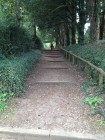 beauty after the dirty grimy streets and houses along the walk from Woburn Sands railway station”.
beauty after the dirty grimy streets and houses along the walk from Woburn Sands railway station”.
Continue through another stile until you reach a green gate on your left hand side, turn left along this path and continue across the field.
1. The Mount (Old House), 2. The Mount (Old pic -1960’s), 3. Footpath across the fields
Here you are now at The Mount – Aspley Guise (TM); this area was developed in 1964 and on the site of the original Mount House now stands a number of large detached new houses, mostly built in the 1960’s. Whilst the original house no longer exists, the Mount also had a role to play in the Secret War. On January 1942, teams from the PWE (French Department) moved in. It was deliberate policy that Research Units (RU’s) were kept separate, so copying of ideas and techniques could be avoided. So French teams F1 and F2 housed at the Mount were not initially aware of each other’s existence. According to accounts in the PWE archives, however, keeping accommodation and broadcasting separate and staging arrival/departures of the different teams may not always have been fool proof. But certainly the teams were likely to have been unaware of the number of different RU’s operating in other houses in Aspley Guise and the magnitude of the operation they were involved in.
The Mount, Aspley Guise, on its high position above Aspley Guise was also one of many county retreats for many wealthy folk in the early 1900’s. Situated amongst sandy hills on the edge of the pinewoods of Aspley Heath, the setting and natural environment of the village gave it a reputation of being a health resort. This owed much to a book called The Topography and Climate of Aspley Guise published in 1856 by Dr James William, who had moved to the district for the benefit of his health. In fact after renting for a short while in The Avenue, Aspley Guise, a map from 1856 shows him living on land just next to the Mount House, on the site of the entrance to the Mount today. Dr William extolled the virtues of the local climate and its positive influence on Health and Disease, “The air of Aspley generally and particularly the elevated parts, is very dry, and therefore suitable for nervous afflictions and relaxed states of the system” comparing it favourably to some well-known European resorts. I hope he is right! Sadly Dr William is not listed in later reports so it is unclear whether he died or moved away.
Continue across a small road and follow the footpath between the houses, you will then be on the main Mount road. Follow a step path ahead between the houses. This takes you down the hill and back to the main road West Hill. At the bottom of the steps turn left and from here you will be heading back towards the Square.
How the Square looked in the old days
The Square – Aspley Guise has always formed the focal point of the village. When the Chernocke Smiths’ installed the first gas lamp in 1868, it replaced an old oak tree and the village stocks. Next to the lamp was the village pump, which had replaced the original spring and supplied all the houses thereabouts (along with the Chernocke Smiths pond!). The last man to occupy the stock was Ned Crute, for being drunk. Here, too, was a “box” for the night watchman, part of whose duty was to patrol the village. Back in the 18th century the Square would have been a lively place to be, with butchers, bakers, grocers and even a confectioner to service the affluent gentry. In 1935 Alice Holmes, a spinster built a new post office and this became the heart of the village, sadly the post office closed in the early until 2000’s and there are no longer any shops in Aspley Guise.
The old cottages of Woburn Lane
Heading back up Woburn Lane – Aspley Guise you will see a number of old cottages just up from the entrance to Spinney Lane and in front of the car park at the village hall. Assessed in early 1900’s they were described as “ a bad row, crowded in, very small, no garden and they are a testament to life back in the 18th Century when up to 12 families would have been living in the 2 bed cottages. At that time, there were 67 Aspley women engaged in the lace making industry. In good weather the women would have sat outside these cottages, as well as cottages at the Square and Water End, Aspley Guise. Girls as young as 7 or 8 were employed making lace and often the women and girls would work by candlelight, wreaking havoc with their eyesight. As this industry died out many of the women/girls found employment in the large houses of Aspley Guise which continued to attract affluent gentry. Indeed today, Aspley Guise attracts people to live in and visit the village. Outdoor activities are enthusiastically supported, golfers can enjoy the amenities of the Aspley Guise and Woburn Sands Golf Club. An excellent cricket pitch is laid out on the Common, and matches are played on Saturdays. Tennis, Bowls and Football are also played. In Mar 2014 it was voted one of the Times Top 100 villages in the country, the areas were selected for offering the best quality of life to the widest number of people.
The ‘secret’ entrance to Dawn Edge
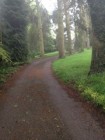 Back on Spinney Lane, just past the entrance to the car park is a driveway amongst the trees. This is the entrance to Dawn Edge – Aspley Guise (DE). During WW2 this was the home to Richard Crossman, British housemaster for PWE and his ‘RU team’ of Germans and Austrians. Crossman’s approach was completely opposed to Sefton Delmer’s and Crossman was responsible for a type of ‘whiter’ propaganda for the PWE. DE served as a recording studio and broadcast the ‘European Revolution’ station, which appealed to ‘Good Germans’ to see the futility of Nazism. This ‘team’ was not just a few select individuals as I had imaged but a strange community of political refugees from the 1930’s, Prisoners of War (POW’s- who had been turned under interrogation), as well as many other PWE staff. At Dawn Edge and the nearby Holt there is evidence of dormitories housing around 40 POW’s.
Back on Spinney Lane, just past the entrance to the car park is a driveway amongst the trees. This is the entrance to Dawn Edge – Aspley Guise (DE). During WW2 this was the home to Richard Crossman, British housemaster for PWE and his ‘RU team’ of Germans and Austrians. Crossman’s approach was completely opposed to Sefton Delmer’s and Crossman was responsible for a type of ‘whiter’ propaganda for the PWE. DE served as a recording studio and broadcast the ‘European Revolution’ station, which appealed to ‘Good Germans’ to see the futility of Nazism. This ‘team’ was not just a few select individuals as I had imaged but a strange community of political refugees from the 1930’s, Prisoners of War (POW’s- who had been turned under interrogation), as well as many other PWE staff. At Dawn Edge and the nearby Holt there is evidence of dormitories housing around 40 POW’s.
Indeed by March 1944 around 100 ‘collaborators’ were involved in this propaganda effort across Aspley Guise. It would not have been possible or wise for many of these diverse ‘foreign nationals’ or individuals to mix with each other, so many other properties were also requisitioned, Broomdown, Netherfield House and Woodlands – Aspley Guise were also used to house those involved in ‘secret’ propaganda. Across the village were RU’s for Polish, Italian, Norwegian teams and along with RAG (Rookery Aspley Guise), TM (The Mount), DE (Dawn Edge), and houses were codenamed as part of security procedures to limit the knowledge of all the RU locations. But that much activity even though it was carefully dispersed, could not go unnoticed in such a small village; strange accents in the Anchor (although they were not supposed to visit the pub, accounts in PWE archives suggest that they did), unusually dressed men cycling around and rumours about buses leaving the village daily from the ‘bigger’ houses (on route to Milton Bryan for radio broadcasts). At Hayfield Farm Diary – Aspley Guise they must of wondered at the 400 pints of milk being delivered daily. Operations taking place in the village were given the general codename Research Units (RU’s), since unwelcome visitors at the house were told that the arrivals were engaged on ‘secret research’ ‘working for the foreign office’. In the ‘hush hush village’ as it became known, people in wartime knew best not to ask questions about the strange comings and goings and the secrecy paid off. The code breaking and propaganda were later credited for contributing to a victorious and speedy end to the war.
And on that note, this insight into the activities ‘behind the doors’ of so many of Aspley Guise’s great houses concludes. Re-trace your steps back to the car park or stay a while and enjoy an afternoon tea at the Moore Place hotel, or hopefully a drink in the Anchor when it re-opens!
I have thoroughly enjoyed learning more about my village and now look at it in a different light as I do the daily school run (walking I might add…), and it takes my mind off all the cars, only too interested in speeding through it as fast as they can as they head to somewhere much more important! I do hope you find some of the stories interesting and if you would like to read any more about the subjects listed, I have listed some resources below.
References
History of Aspley Guise village , its inhabitants and listed houses/buildings; Sources-The Story of Aspley Guise- Joan Christodoulou, The Women’s Land Army in Bedfordshire 1939-1950 – Stuart Autrobus, Bedford gov. community and record Archive office, Woburn Reporter, 1947, Scarlet Finders: Directory of WW1 Supply Depots, London Gazette Jun 2010, Sources MOD Roll of Honour for Bedfordshire, St Botolphs church parish records, Mid Bed conservation leaflet on Aspley Guise, March 2008, britishlistedbuildings.co.uk, Aspley Guise
Accounts of WW2 Spy, Intelligence and Propaganda activity; Sources – Bletchley Park Secret Sisters- John A.Taylor, The Counterfeit Spy – The Untold Story – Sefton Delmer, Spy Capital of Britain-Stephen Bunker, The Bedford Triangle-Martin Bowman, Churchill’s Wizards- Nicolas Rankin, Station 43 Audley End House and the Polish section- Ian Valentine. Black Boomerang- Sefton Delmer, War Illustrated, Open University, Clutch project – PWE Research Unit.
General research and local studies; Sources – Wikipedia, National Archives, Visit to local Bedfordshire archives, MK Heritage, Woburn Sands Collection- Guides from 1900s, Bedford library, Woburn Sands library reference material, Bedford Borough Council and Central Bedfordshire Council and Aspley Guise web pages, Changing Faces, Changing Places – Ted Enever, Bedfordshire on Sunday- Mar 2014
Pictures and Images; with many thanks to Paul Cox and Fran Fry (WSDS) for sending me old pictures of the village for use in this article, along with recent pictures I have taken to share some of the special places and pathways connecting the village.
Notes;
Information about the Secret War; whilst much about the WW2 history of Aspley Guise has come to light, some archives still remain closed and much of the documentation was destroyed at the time. But it is unlikely that this is the end of the story. In an old desk from the Rookery some of Sefton Delmer’s papers were discovered and very recently the village of Whadden was in news (5 miles from Bletchley Park) it has only just been discovered that it housed Operation Section 8 – home to the Secret signallers. http://www.bbc.co.uk/news/video_and_audio/headlines/36245666
What became of Sefton Delmer? After the war he became Chief Foreign Affairs Reporter, at Daily Express, where he remained for 15 years. Following a dispute he left and wrote a number of books recounting his wartime ‘career’.
What became of Richard Crossman? He eventually became Assistant Chief of the Psychological Warfare Division of SHAEF and was awarded an OBE for his wartime service.[5] In the spring of 1945 he was one of the first British officers to enter the Dachau concentration camp. After the war he entered the House of Commons in 1945 as a Member of Parliament. Interesting in his role as Minister of Housing and Local Government, in the late 1960’s, a new city began to be planned. He had a role to play in 1967, choosing its name and so Richard Crossman announced ‘Milton Keynes’ was to built and a huge population moved in to it and the quiet farmlands and unassuming villages disappeared, along with many secrets still coming to light.
Visiting Aspley Guise: Every year in May & Jul Aspley Guise host an Open Gardens, an opportunity to take a quiet stroll around the village and pathways and see inside some ‘special gardens’ around the village.





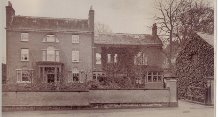




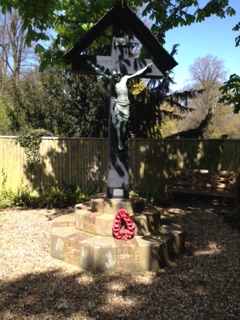

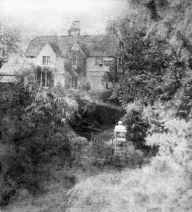
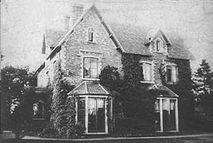

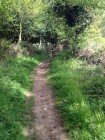
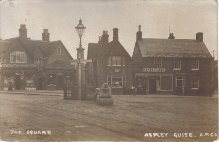





No Comments
Add a comment about this page